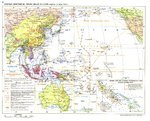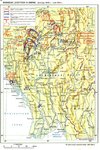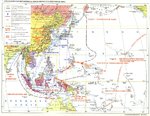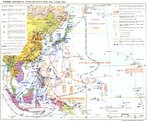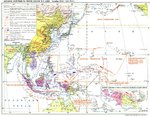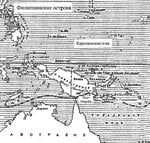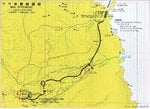Whether will help with a question of war on Pacific ocean in 1943-1945?
Everything, that at me is. I am interested especially with war in air. What forces and means (types of machines, their quantity{amount}) were used in the basic battles on Pacific ocean at this time. Full descriptions of battles. It would be very healthy, if all this with maps...
I know the basic battles. In general. It would be desirable to learn in more details.
Everything, that at me is. I am interested especially with war in air. What forces and means (types of machines, their quantity{amount}) were used in the basic battles on Pacific ocean at this time. Full descriptions of battles. It would be very healthy, if all this with maps...
I know the basic battles. In general. It would be desirable to learn in more details.

